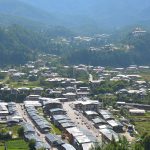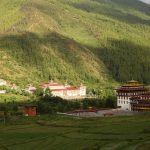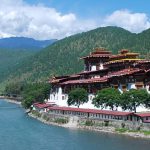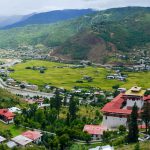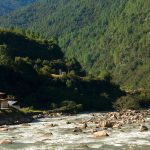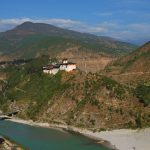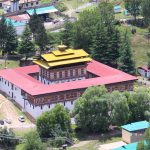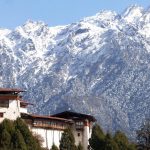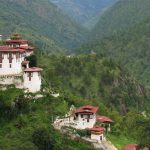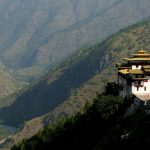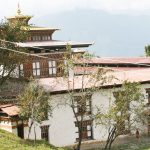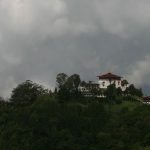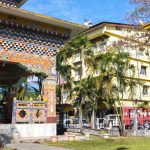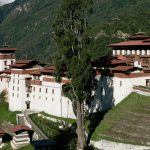Bhutan is divided into 20 regions called the Districts or Dzongkhags (In Bhutanese term). Each district is subdivided into smaller regions called blocks or Gewogs (In Bhutanese term). The blocks or Gewogs are comprised of certain number of villages, towns and cities.
Bumthang
This region that spans from 2,600-4,500 m is the religious heartland of the nation and home to some of its oldest Buddhist temples and monasteries. Tales of Guru Padmasambhava and the tertons (“religious treasure-discoverers”) still linger in this sacred region. Bumthang Dzongkhag consists of four main valleys, Ura, Chumey, Tang and Choekhor. Choekhor is the
Thimphu
The Kingdom’s capital city is home to approximately 100,000 inhabitants including the Royal family. This bustling little city is the main centre of commerce, religion and government in the country. The juxtaposition of ancient tradition and modernity make Thimphu the ideal location for visitors to break away from their tour itinerary to immerse themselves in
Punakha
Punakha Dzongkhag has been inextricably linked with momentous occasions in Bhutanese history. It served as the capital of the country from 1637 to 1907 and the first national assembly was hosted here in 1953. Punakha Dzong is not only the second oldest and second largest dzong but it also has one of the most majestic
Paro
Paro valley extends from the confluence of the Paro Chhu and the Wang Chhu rivers at Chuzom up to Mt. Jomolhari at the Tibetan border to the North. This picturesque region is one of the widest valleys in the kingdom and is covered in fertile rice fields and has a beautiful, crystalline river meandering down
Trashi Yangtse
One of the newest dzongkhags in the country, Trashi yangtse was established as a distinct district in 1992 and spans 1,437 sq. km of subtropical and alpine forests. With its wealth of natural, historical and cultural resources Trashi yangtse is a destination that visitors to Bhutan will never forget. At an elevation of 1750-1880 m,
Wangdue Phodrang
Wangdue Phodrang is one of the largest dzongkhags in the country. As the district covers 4,308 sq. km and ranges from 800-5800 m in altitude, it has extremely varied climatic conditions ranging from subtropical forests in the south to cool and snowy regions in the north. Most of Wangdue Phodrang District is environmentally protected. The
Haa
Located in South West of Paro and covering an area of roughly 1706 sq. km, Haa is one of the smallest Dzongkhag in the country. This tiny region is one of the most beautiful and isolated areas in the kingdom, adorned with pristine alpine forests and tranquil mountain peaks. Haa is the ancestral home of
Gasa
Gasa, the northernmost district of the country adjoins the districts of Punakha, Thimphu and Wangdue Phodrang and with Tibet to its north. This starkly beautiful region with elevations ranging from 1500 to 4,500 m experiences extremely long and cold winters and short but beautiful summers. It has the smallest population with just about 3000 inhabitants.
Lhuentse
In the northeastern corner of Bhutan lies the ancient region of Kurtoe or Lhuntse as it is known today. It is the ancestral home of our Kings and hosts several of the sacred sites of pilgrimage in the country. It is located 77km from Mongar (3 hours’ drive) and is one of the most isolated
Trashigang
Trashigang, “The Jewel of the East”, spans the easternmost corners of the kingdom, skirting up to the edge of the Indian state of Arunachal Pradesh. It is the country’s largest district, with an altitude ranging from 600 m to over 4000 m. Bhutan’s largest river, Dangme Chhu, flows through this district. Trashigang town is set
Mongar
The road approaching Mongar is one of the most spectacular journeys in the country. It passes over sheer cliffs and through beautiful fir forests and green pastures. Travelers passing this route will have the opportunity to visit the Rhododendron garden. There are countless varieties of rhododendrons here and on clear days you can even catch
Zhemgang
Zhemgang is a region blessed with incredibly rich biodiversity. Its lush forests are home to 22 endangered animal species including the Golden Langur. Though much of the district has warm and humid climatic conditions, its northern regions have moderately cool temperatures. Zhemgang is notable for being one of the last regions where ancient Bon (Animist)
Samdrup Jongkhar
Samdrup Jongkhar town holds the distinct honour of being the oldest town in Bhutan. This border town is a bustling little settlement packed to the brim with shopkeepers and hawkers from across the border. The gateway to eastern Bhutan, Samdrup Jongkhar is situated in the southeastern region of the country and shares borders with the
Trongsa
The Vanguard of the Warriors – Trongsa Dzongkhag is located near the centre of Bhutan and was considered crucial in controlling the kingdom in earlier years due to its strategic position. This town is situated on a steep ridge and offers spectacular views of the deep valleys surrounding it. The various hotels, guesthouses and restaurants
